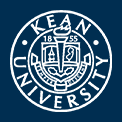Files
Download Full Text (2.3 MB)
Description
John wrote to Susan, addressed to Mr. Corvaisier's, near Dunk's Ferry. His horse took a rest and twisted the shafts when it tried to get up. It took him an hour to untangle and free the horse. Most of the people exposed to yellow fever by Enks have died or are sick. John considers getting a room in Frankford or somewhere within the vicinity of the city. The letter is dated "Monday." The letter was likely written September 16th, based on Enk's death the previous week.
Author/Creator
John Kean (1756-1795)
Recipient
Susan Kean, formerly Susan Livingston and later Susan Ursin Niemcewicz (1759-1833)
Creation Date
Monday, 1793
Creation Date
9-16-1793
Document Type
Manuscript
Inventory Location
Bay 1, Column 1, LHC Series 2
Recommended Citation
Kean, John. John Kean to Susan Kean, September 16, 1793. Manuscript. From Special Collections Research Library and Archive, Kean University, Liberty Hall Collection 1790s. https://digitalcommons.kean.edu/lhc_1790s/23
Rights
This collection is open to the public for research use. Copyright remains with Kean University. Credit this material. Personal photographs may be made for research purposes. Inquiries regarding publishing material from the collection should be directed to the Special Collections Research Library and Archive at keanscrla@kean.edu.
Publishing Repository
Special Collections Research Library and Archive, Kean University



Collection
Liberty Hall Collection, 1711-1847 (bulk 1790-1830)